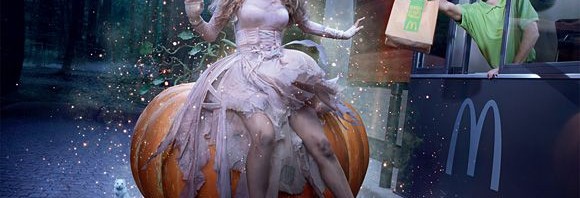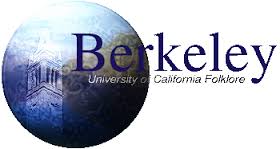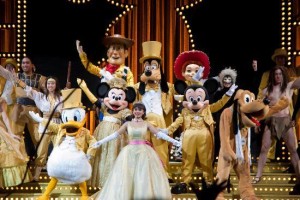Western States Folklore Society is celebrating 75 years at their 2016 meeting! Three of the FTTV Project Participants are going to UC Berkley this April for the WSFS Conference to present the panel entitled “Fat Fairies, Mashups, and Advertisements: The Hypnotic Effect of TV Fairy Tales.” If you are in the area we would love to have you join us! Take a look at each of the abstracts below.
The first paper is titled “Fat Fairies: Stereotype, Body Type, and Personality of TV Godmothers”:
ABC’s Once Upon a Time introduced Catherine Lough Haggquist as Cinderella’s fairy godmother. Instead of playing Disney’s classically oversized, bumbling, air-headed godmother, Haggquist appeared cool and collected, dressed like a princess. And ABC killed Haggquist off in the very same episode. Was she too fit and smart for the godmother stereotype? Haggquist is not the only fairy to suffer for body type. Jeana Jorgensen and other feminist writers have seen the danger of age and body stereotyping in tales. Adding to these arguments, I propose we approach fairy tale bodies as a spectrum where personality is attached to body type. Princesses are petite and beautiful, villainesses are skinny and scheming, and godmothers are fat and witless. This spectrum of body images affects both how we perceive others and ourselves in comparison to the fairy tale figures we see on popular TV shows from Fractured Fairy Tales to Once Upon a Time. (Ariel Peterson)
Sound familiar?
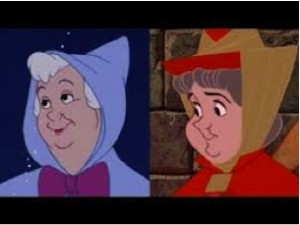
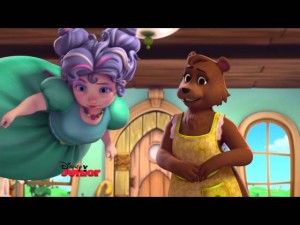
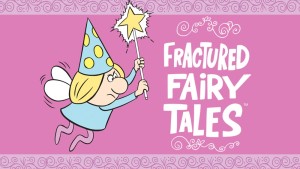 Next up, genders in mashups are analyzed in “Fairy Tale Mashups in Children’s TV and the Prevalence of Gender-Based Patterns”:
Next up, genders in mashups are analyzed in “Fairy Tale Mashups in Children’s TV and the Prevalence of Gender-Based Patterns”:
Children’s television shows often utilize a combination of fairy tale motifs or characters in a single episode. Are there patterns to the common groupings of these tales? Are these patterns based in the gender, age, or species (human or animal) of the protagonist; or are they linked to the source material of the tale; or the specific target audience of the TV show? Though the grouping of fairy tale characters and plot devices in children’s television shows may seem haphazard, I argue that the patterns found in these groupings can illuminate implicit messages communicated concerning age and gender that are specifically targeted towards young children. Because television is so prevalent in the lives of young children, understanding the use of fairy tale motifs in this form can help us understand why they remain so culturally impactful today. (Lauren Redding)
Finally, our blog posts about TV commercials culminate in the promising synthesis of “Don Draper Thinks Your Ad is Cliche: Fairy Tales in Advertising”:
When examining the history of fairy tale iconography in advertising, folklore scholar Donald Haase compared the Pied Piper of Hamelin to a symbol of advertising who could “play his pipe ever so sweetly and the consumers following him without resisting his charming and manipulative music.” In contrast, in a 2012 episode of Mad Men, advertising luminary Don Draper shoots down a shoe commercial pitch featuring Cinderella, calling the idea “cliché.” The temptation for advertisers to rely on fairy tale figures and iconography continues today, and many ignore Don’s aversion for cliché because it still works. However, there are some ads featuring fairy tales which avoid cliché and are truly innovative for their time. I’ll examine how and for whom these fairy tale figures have been adapted in order to examine popular culture’s commercialized and hypnotic relationship with fairy tales in the most commercial format available: television advertisements. (Preston Wittwer)
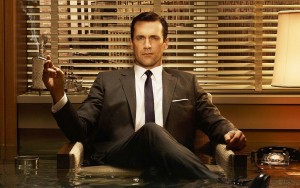
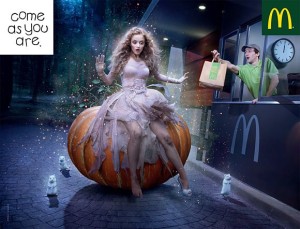
Come join the fun with us!
